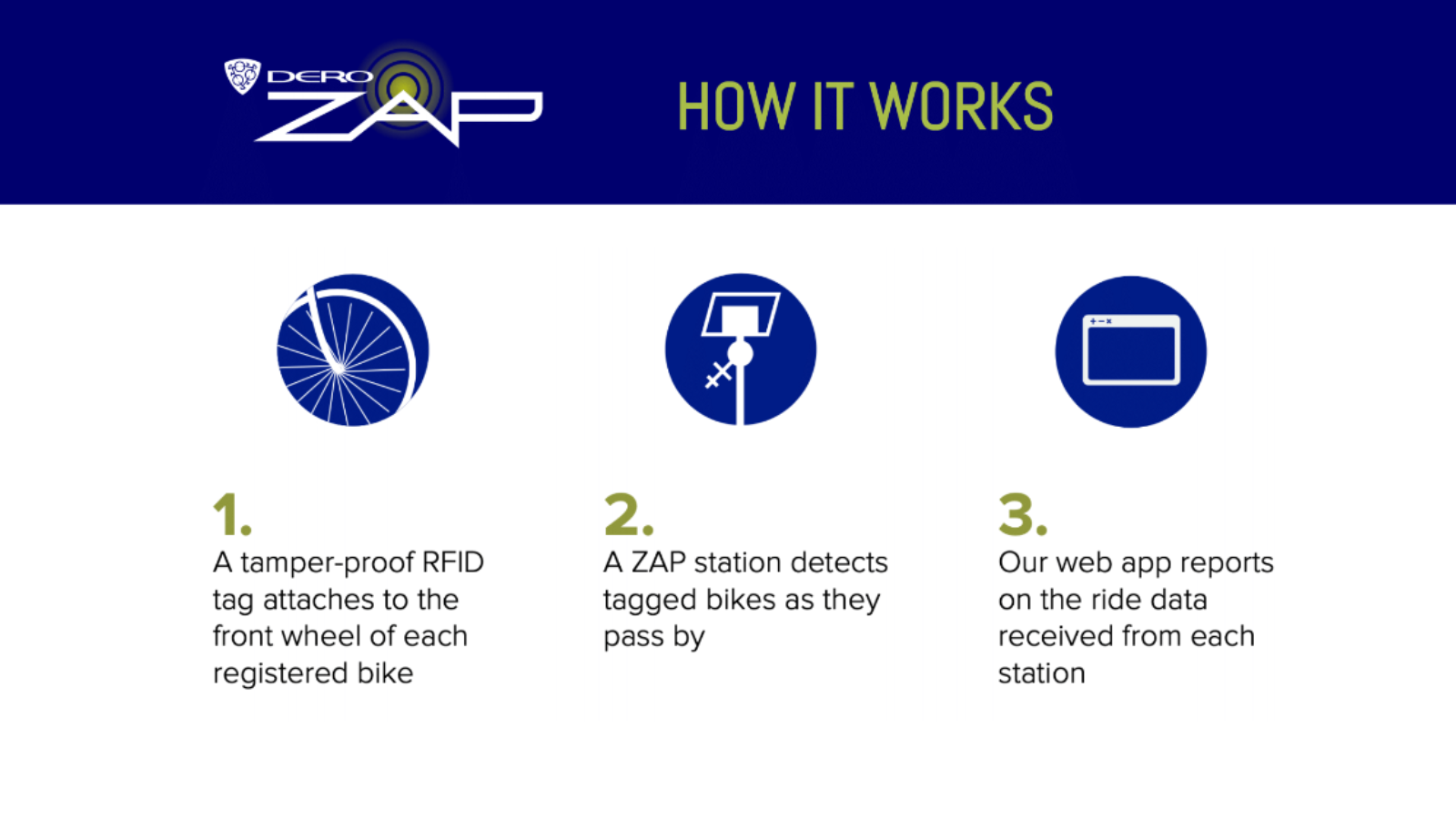DISCOVER YOUR LOCAL BICYCLING COMMUNITY
Find local advocacy groups, bike shops, instructors, clubs, classes and more!
Webinar Replay: Encouraging And Measuring Bicycle Use In A Changing Landscape
One of the best ways to encourage bike commuting at your business, on your campus, or in your community is to recognize and reward people who ride bikes — many places do this through a commuter wellness program!
Thursday, December 15th, the League co-hosted a webinar with our partners at Dero and two Bicycle Friendly Universities that use Dero Zap, Dero’s tool for managing and growing commuter wellness programs. Through a lively discussion, we explored ways in which incentive and tracking programs like Zap can help places better understand cycling trends, and encourage its continued growth. Read on for a quick recap of the insights provided, and watch the full recording of the webinar below.
Amelia Neptune, director of the League’s Bicycle Friendly America (BFA) program, which evaluates states, cities and towns, businesses, and universities on their efforts toward better bicycling, kicked off the webinar by sharing a background of the 5 E’s criteria by which BFA applicants are judged: engineering, encouragement, education, evaluation & planning, and equity & accessibility. Starting, managing and growing commuter wellness programs, or similar programs where ridership is tracked and rewarded, gets applicants extra points across a lot of the 5 E categories.
Steve Sanders, the former alternative transportation manager for the University of Minnesota and current higher education business developer for Dero, shared how Dero Zap works (see below) to automate a commuter wellness program so that participants only have to register their bike and ride past a Dero Zap station for commute data to be collected and then reported out to program administrators. This system works to minimize under-reporting (cyclists forgetting to manually log their trips) and over-reporting (cyclists cheating the system).

Program managers at the University of Minnesota – Twin Cities campus and Oregon State University both shared a rundown of their respective commuter programs for students, faculty, and staff. At the University of Minnesota, the system is closely tied to the University’s employee wellness program so that employees in the Zap program receive discounts on their health insurance the more they ride. On top of individual incentives, riders are encouraged to form teams and compete in seasonal challenges. At Oregon State University individual bike commuters are automatically entered in a monthly prize drawing as long as they ride past a ZAP station at least 10 times that month. Prizes often include gift cards or gift certificates to local businesses.
However, both universities shared that offering the ZAP program on campus has highlighted how bike commuters are often not only motivated by the chance of winning a prize, but by each other and the social benefits of tracking ridership, i.e., seeing themselves on leadership boards and building competition between teams to win challenges.
Other Topics Covered During the Q & A Portion of the Webinar:
- Sharing the road safely with the growing usage of electric multimodal forms of transportation i.e. scooters
- Bicycle Commuter Benefit
- Encouraging and coordinating competition between commuter programs
- What’s the cost of starting a commuter program
- What to do if funds are not available for financial incentives
Watch the webinar recording below for more insight on the Q & A, and see our BFA Resources page for more existing resources for encouraging bike commuting at your business, on your campus, or in your community!